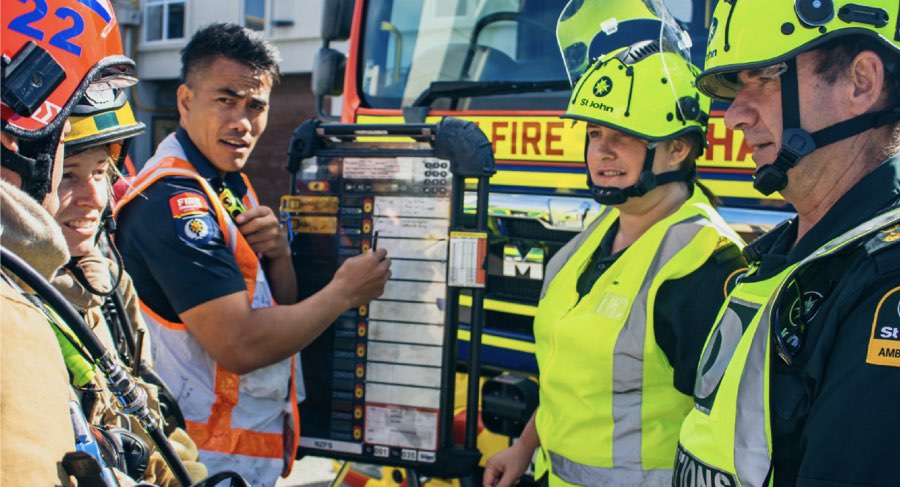
A massive landowner outreach and construction effort has seen transmission towers appear all over the country for the new digital, encrypted national radio network that willdeliver a more secure, reliable and resilient radio service for police, fire and ambulance.
The new Land Mobile Radio (LMR) network is being delivered as part of the $1.4B Public Safety Network by government entity, Next Generation Critical Communications working on behalf of Police, Fire and Emergency NZ, Wellington Free Ambulance and Hato Hone St John.
The Public Safety Network’s LMR network will support around 30,000 emergency services personnel and the communities they serve. For the first time, the four emergency service agencies will share the same radio network making it easier to communicate and work together for everyday public safety, and crucially, on large scale events like natural disasters.
The LMR network’s vendor, Tait Systems New Zealand (a wholly owned subsidiary of Tait Communications), has acquired more than half (271) of the 500 sites required. They have built 93 sites that are now ready for testing and have a further 72 sites under construction.
All radio transmission sites are built for Wellington, Canterbury requires only two more sites to be built, and Auckland is on track for the first quarter of 2026. These three areas represent where 60 per cent of New Zealand’s population live and are served by the emergency services.
Work on the radio transmission sites to cover the rest of New Zealand is underway in the eight remaining LMR network regions. Once tested, each region will be handed over to the emergency services throughout 2026 and 2027 to begin their final testing andprogressive transition to using the new radio network in each region.
While this site build milestone is a significant one, the Land Mobile Radio network sites are not ready for live service yet. Next Generation Critical Communications (NGCC), Tait Systems NZ and the emergency services have begun a large, rigorous programme of 2 work to gain assurance the new network will be fit for frontline responders to begin using, from mid-2026 onwards.
“NGCC, Tait Systems NZ and the emergency services are entering a six-month period of extensive testing on a fully-functioning scale LMR network environment in Canterbury. This includes using emergency services operational scenarios to test technology, coverage, resilience, inter-agency communication, and all associated systems,processes and change management approaches.
“The rigour behind this phase reflects the mission critical nature of the network as well as the need for emergency services to be able to move quickly and smoothly from the old network to the new when the time comes,” says Next Generation Critical Communications’ Director, Steve Ferguson.
“This phase is about making sure that when our emergency responders push the button on their radios using the new network, it works every time. The safety of emergency responders and the public they serve depends on it.”
Tait Communications is well underway with the manufacture and installation of more than 22,000 (radio) terminals for emergency services vehicles, stations and buildings and personnel that are needed to use the new radio network.
PSN Cellular Services are already in use by 25,000 frontline responders
In addition to the LMR network, the Public Safety Network has already put world-leading new cellular services into the hands of more than 25,000 emergency responders. This means their mobile phones, tablets and other emergency equipment can use both the Spark and One NZ networks, and they get priority access to cellular networks ahead of the public when there is network congestion and degradation like in a major emergency or crowd event.
“These PSN Cellular Services complement the new radio network and together, they will deliver a greatly enhanced level of capability, resilience and reliability for emergency services communications, including to enable them to communicate more easily with each other in emergency operations like big natural disasters,” says Mr Ferguson.
